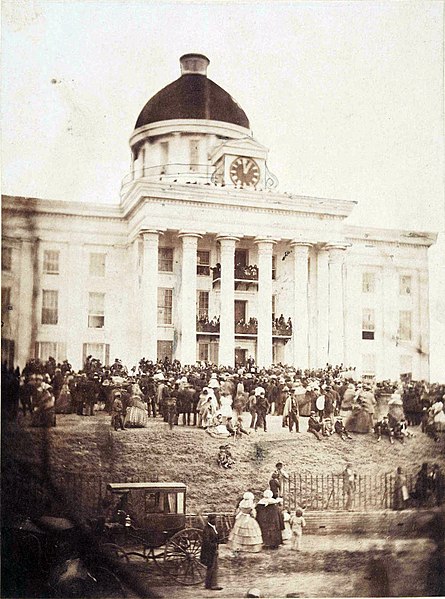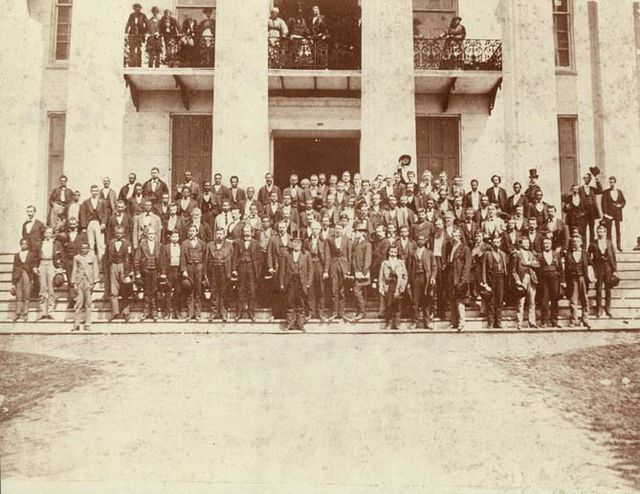The history of what is now Alabama stems back thousands of years ago when it was inhabited by indigenous peoples. The Woodland period spanned from around 1000 BCE to 1000 CE and was marked by the development of the Eastern Agricultural Complex. This was followed by the Mississippian culture of Native Americans, which lasted to around the 1600 CE. The first Europeans to make contact with Alabama were the Spanish, with the first permanent European settlement being Mobile, established by the French in 1702.
Artists conception of Moundville, a Mississippian culture site on the Black Warrior River in Hale County
Artist's conception of the Taskigi Site, a fortified mound and village near Wetumpka, Alabama
The inauguration of Jefferson Davis in Montgomery on February 18, 1861.
Members of the Alabama state legislature on the steps of the Capitol in Montgomery during Reconstruction (1872)
The Territory of Mississippi was an organized incorporated territory of the United States that was created under an organic act signed into law by President John Adams on April 7, 1798. It was dissolved on December 10, 1817, when the western half of the territory was admitted to the Union as the State of Mississippi. The eastern half was redesignated as the Alabama Territory; it was admitted to the Union as the State of Alabama on December 14, 1819. The Chattahoochee River played a significant role in the definition of the territory's borders. The population increased in the early 1800s from settlement, with cotton being an important cash crop.
1948 postage stamp depicting the Mississippi Territory





